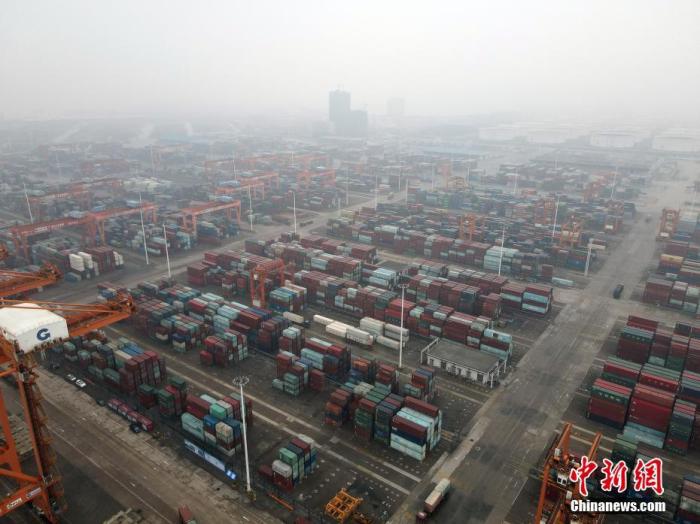(Economic Observation) After nearly a year of high growth, where is China's foreign trade heading?
China News Service, Beijing, June 7 (Reporter Li Xiaoyu) China’s foreign trade data was released on July 7th. The growth rate of 26.9% in imports and exports, 18.1% in exports and 39.5% in imports are still in the world’s major economies. Dazzling.
But Beijing scholars believe that after nearly a year of sustained rapid growth, China's foreign trade is facing new problems and challenges.
According to official data, as one of the important supports for China's exports since last year, the situation of the export of epidemic prevention materials seems to be changing.
From January to May, textile exports including masks fell by 10.3% year-on-year, the first decline this year.
Data map: Busy work scene in Guangxi Qinzhou Port.
Photo by China News Agency reporter Mao Jianjun
Shi Xianjin, an assistant researcher at the Institute of World Economics and Politics of the Chinese Academy of Social Sciences, said that China’s export situation in the past period is directly related to the epidemic.
The progress of epidemic prevention and control and the advantages of the industrial chain and supply chain have enabled China to continue to meet overseas demand when factories in other countries are shut down. The sharp increase in exports of medical supplies and the "home economy" has also driven export growth.
However, as the epidemic is gradually brought under control, the export of epidemic prevention materials will decline significantly, which will affect overall exports.
The cold or warm foreign trade largely depends on the weather in the international market. In this regard, the situation facing China is not optimistic.
According to official data, affected by factors such as price increases suppressing demand and the cancellation of steel export tax rebates, the new export order index in China's Manufacturing Purchasing Managers Index (PMI) in May was 48.3%, which was 50% below the prosperity and decline line, indicating external demand In the shrinking zone.
In addition, rising raw material prices, large exchange rate fluctuations, and poor shipping logistics have also caused troubles for enterprises.
According to reports, the price of containers that has skyrocketed some time ago has been "steadily rising" recently, and the $3,000 markup on some routes is still "difficult to find".
The average freight for a container from China to the United States used to be US$2,000, but now it has risen to US$20,000 or even higher.
However, some analysts believe that despite many risks and challenges, China's foreign trade as a whole will maintain rapid growth this year, and exports will still become an important engine for China's economic growth.
Shen Jianguang, chief economist of JD Digital Technology, said that compared with the rapid heating up on the demand side, the recovery on the supply side in Europe and the United States is still significantly lagging behind. This widening of the gap between supply and demand will strongly support China’s exports.
In addition, the Indian mutant virus seems to be spreading to Southeast Asia. If the epidemic worsens, the global supply chain will inevitably suffer a second impact, which may also make China's supply capacity more dependent on the world.
In Shen Jianguang's view, under the influence of these two factors, it is expected that China's exports will continue to grow at a relatively high rate this year. Even if the base number rises in the second half of the year, the decline in export growth will be relatively limited.
Liang Ming, director of the Institute of Foreign Trade of the Institute of International Trade and Economic Cooperation of the Ministry of Commerce, also believes that there is no suspense that China's foreign trade will maintain a positive growth this year, and the scale will reach a new high.
A series of targeted policy measures will also help foreign trade maintain stability.
For example, in response to the continuous increase in commodity prices, Chinese officials have recently issued multiple orders to strictly investigate hype behaviors to maintain normal market price order.
Gao Feng, a spokesperson for the Ministry of Commerce of China, said a few days ago that the next step will continue to ensure the supply and price stability of bulk commodities, and build a mutually beneficial and win-win bulk commodity stable trade channel.
At the same time, practical and targeted measures have been taken to support various foreign trade enterprises, especially small, medium and micro foreign trade enterprises in their stable operation and healthy development.
(Finish)

